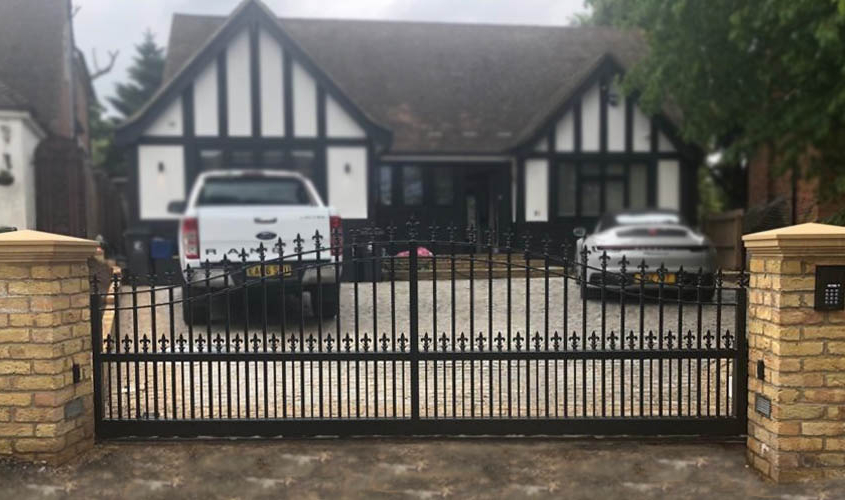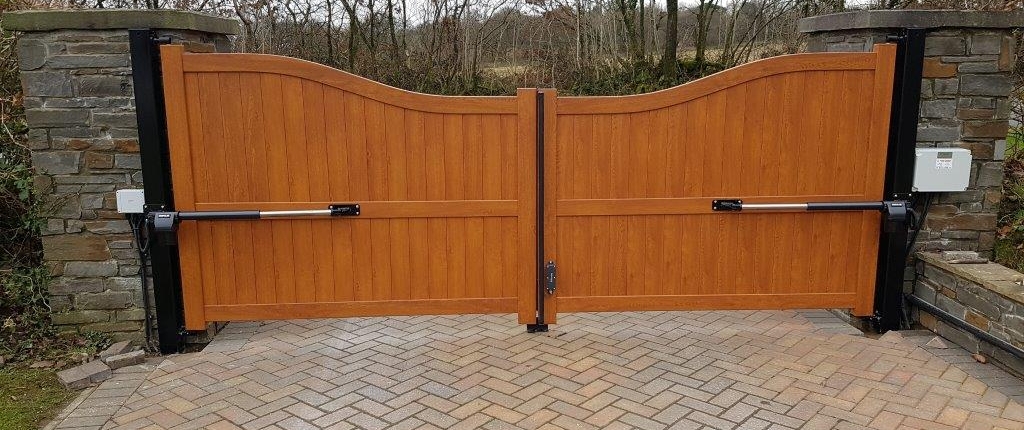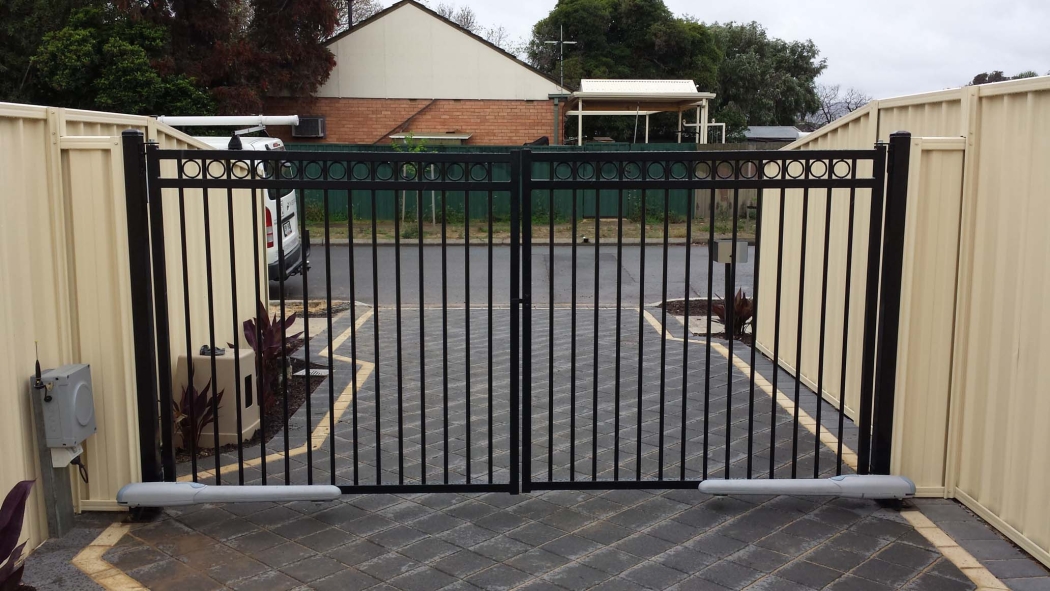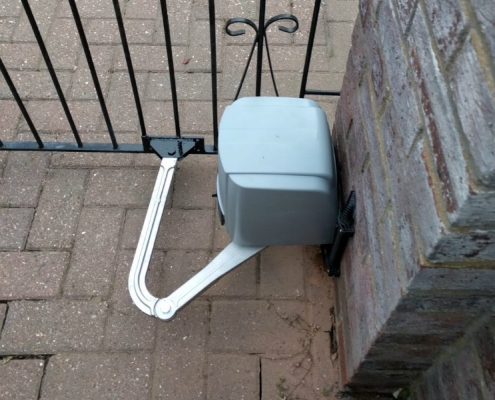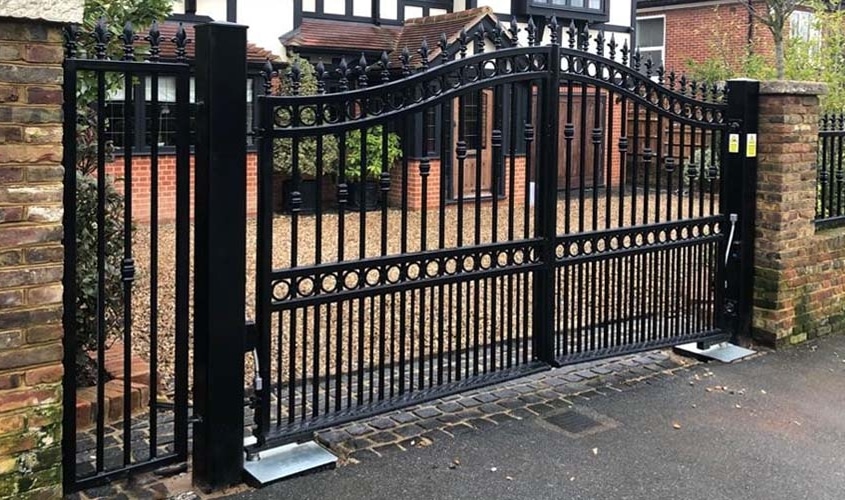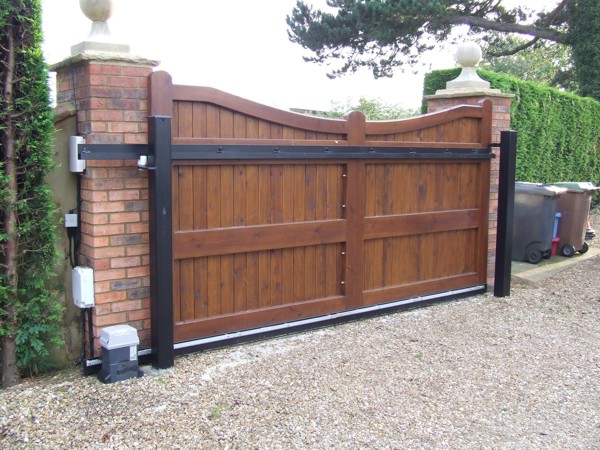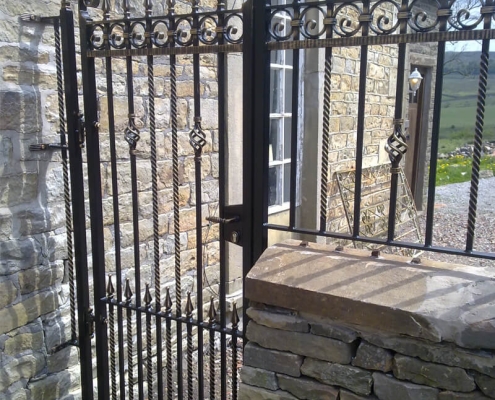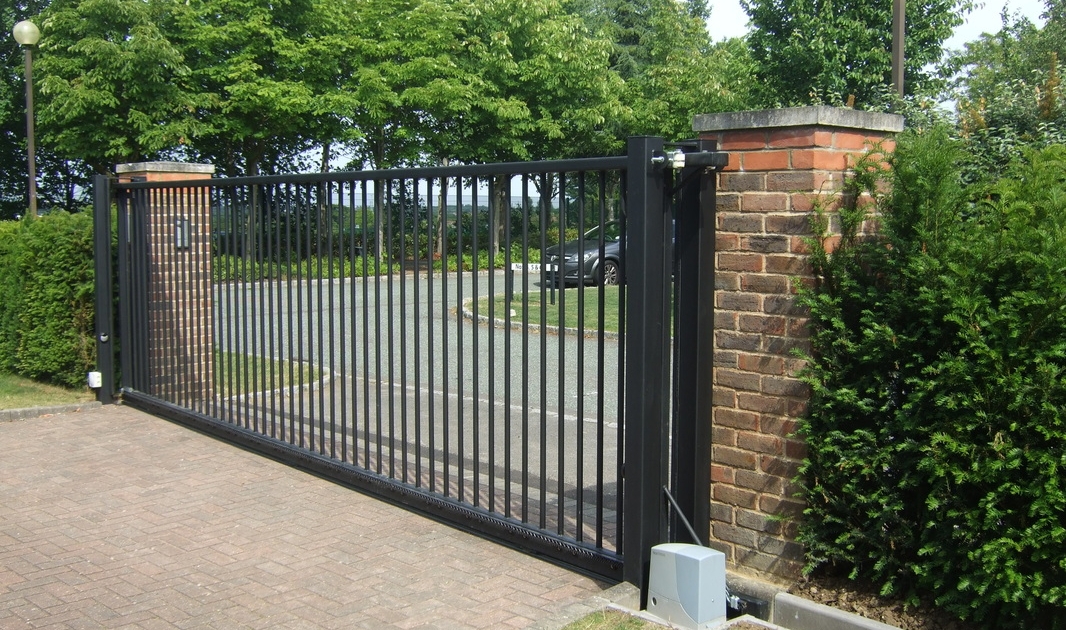What Are The Different Types of Automatic Gate Openers?
Going from manual gates to electric gates or having new electric gates invariably raises the question, ‘What are the different types of automatic gate openers?’
If you’ve got gates at the entrance to your drive, do you have to get out of your car and push them open? Or worse, do you leave them open day and night to avoid the hassle? Leaving them open might be easier but it makes it pointless to have them.
However, if your gates are automatic, they have motors that open and close them at the touch of a button. You simply wait in your car while they open fully, and then drive through before they close magically behind you.
Electric gates are fabulous but unless you know someone who already owns automatic gates or you’ve had them at a previous house, how do you know which gate automation system is best for you?
Essentially, the main components of any automatic gate set up will be similar except for the gate motors. These move the gates and are also called gate openers or gate closers. This article describes the most effective and commonly used types of automatic gate openers available today.
Types of Automatic Gate Openers For Swing Gates
The various types of automatic gate openers for swing gates work by pushing and pulling the gates open or closed as they pivot on their hinges. The gate hinges are attached to pillars, posts or walls on either side of a wide driveway. If you have a narrow entrance and only need a single gate, you only need hinges on one side.
The different types of automatic gate openers for swing gates have the body of the motor fixed to either the gate post, pillar, a wall or the ground. It is mounted so that it can deliver its force without moving. But the fixed gate motor will have a moving arm that is attached to the gate. As the fixed gate motor moves the arm attached to the gate, the gate opens and closes.
Ram Gate Operators
One of the types of automatic gate openers for swing gates are called rams. These have a long thin motor body which is attached to a fixed point such as the gate pillar. Inside the motor’s body is a reservoir of hydraulic fluid and a long thin motor arm. By pressurising the fluid, the arm can be pushed out of the motor. Reducing the hydraulic fluid pressure retracts the arm back into the motor body. By attaching the exposed end of the arm to the gate, extending the arm pushes the gate closed and retracting it opens the gate.
Linear Screw Type Automatic Gate Openers
Linear screw motors look a little like ram types of automatic gate openers. They have a long thin motor body, and one end is fixed to the wall or a gate post or pillar. Instead of pushing and pulling a hydraulic arm out of and back into its body like hydraulic rams, the linear screw type of electric gate motor spins a threaded shaft inside its casing. This shaft has a gate mounting bracket with an internal thread screwed onto it.
The motor housing does not completely enclose the threaded shaft so that the mounting bracket can protrude from the housing and still move up or down the threaded shaft’s length freely. By attaching the bracket to the gate, spinning the threaded shaft with the gate motor screws the bracket up or down the shaft. Because this is attached to the gate it pushes it open or pulls it closed as it moves up and down the threaded shaft.
Articulated Arm Gate Motors
Of the different types of automatic gate openers available, the articulated arm motor is the easiest to see in action. There are less hidden components than in ram or linear screw types of automatic gate motors. The motor is housed in a casing that is mounted to the gate post or other solid object near the hinges. The motor output shaft exits the casing on its underside where a two-part, jointed arm is mounted. The other end of the arm is attached to the gate. Operating this type of automatic gate opener rotates the arm slowly so it opens or closes the gate.
Underground Gate Openers
All underground types of automatic gate openers are bolted inside foundation boxes that are mounted under the gate hinges in specially dug pits. The only parts of the motor you can see are the foundation box lid and the motor arm that is attached to the motor output shaft sticking through a hole in the foundation box lid.
The gate motor arm is attached to the underside of the gate and it and the motor output shaft act as the gate’s bottom hinge. Operating the motor slowly rotates the arm which opens or closes the gate.
Of all the different types of automatic gate motors, undergrounds need to be the most powerful, require the most work to install but are the most discrete. Rams and linear screws need the least power but rams require careful alignment when they are installed. Articulated arm gate openers can be used on thick gate pillars but the arm on these motors creates a possible hazard not present with other gate openers. As the gate opens, the articulated arm’s two components close together like scissors so it’s important that nothing can be caught between them during their operation.
Are There Different Types of Automatic Gate Openers for Sliding Gates?
With such a variety of types of automatic gate operators used to open and close swing gates, you might think the same would be true with sliding gate motors. However, the opposite is true as there is only one type of automatic gate opener for sliding gates.
A sliding gate moves across the entrance to your driveway. They ‘slide’ on wheels that run along a track laid between the edges of your driveway entrance. There is usually a support on either side of the gate entrance to hold the gate vertical. And there will be a toothed rack bolted near the bottom edge of the side of the gate that faces the house.
The types of automatic gate opener used for sliding gates all look like oblong boxes. There’s an electric gate motor and electronic controls inside this but the output shaft is the only part that is visible on the outside. This protrudes through the side of the motor casing and has a toothed cog mounted on it.
Carefully positioning and fixing the gate motor to the ground allows the toothed cog to mesh with the toothed rack on the back of the gate. Once the motor is operated, the slowly rotating cog pulls the gate open as it turns along the gate rack.
Do Cantilever Gates Use Different Types of Gate Openers?
Cantilever gates are effectively sliding gates but without the track. The gate is held off the ground by counterweights and rollers but the principle of operation is the same as a sliding gate that runs on a track. This means that cantilever automatic gates can use the same types of gate automation openers as sliding gates.
Gate Openers For Pedestrian Gates?
Most pedestrian gates are small enough that they can be opened by hand and don’t need electric gate motors. If any of the different types of gate automation openers described above are used for pedestrian gates they are usually rams or articulated arm motors. They are also low power operators designed to open and close lightweight gates.
As you can see, there are a lot of different types of automatic gate openers. Each manufacturer will have a range of these motors designed for electric gates of different weights and sizes. This article is designed to explain what the different types of gate automation openers are, but it is not a substitute for the advice, guidance and knowledge of an experienced gate automation engineer
If you are looking for new electric gates or replacement components for existing automatic gates, contact Electric Gate Repair London free on 0800 195 1470 or email info@egrl.co.uk. We have many years experience of installing, maintaining and repairing damaged automatic gates in London and the surrounding counties. Please check out our reviews and we hope that we can help you soon.

